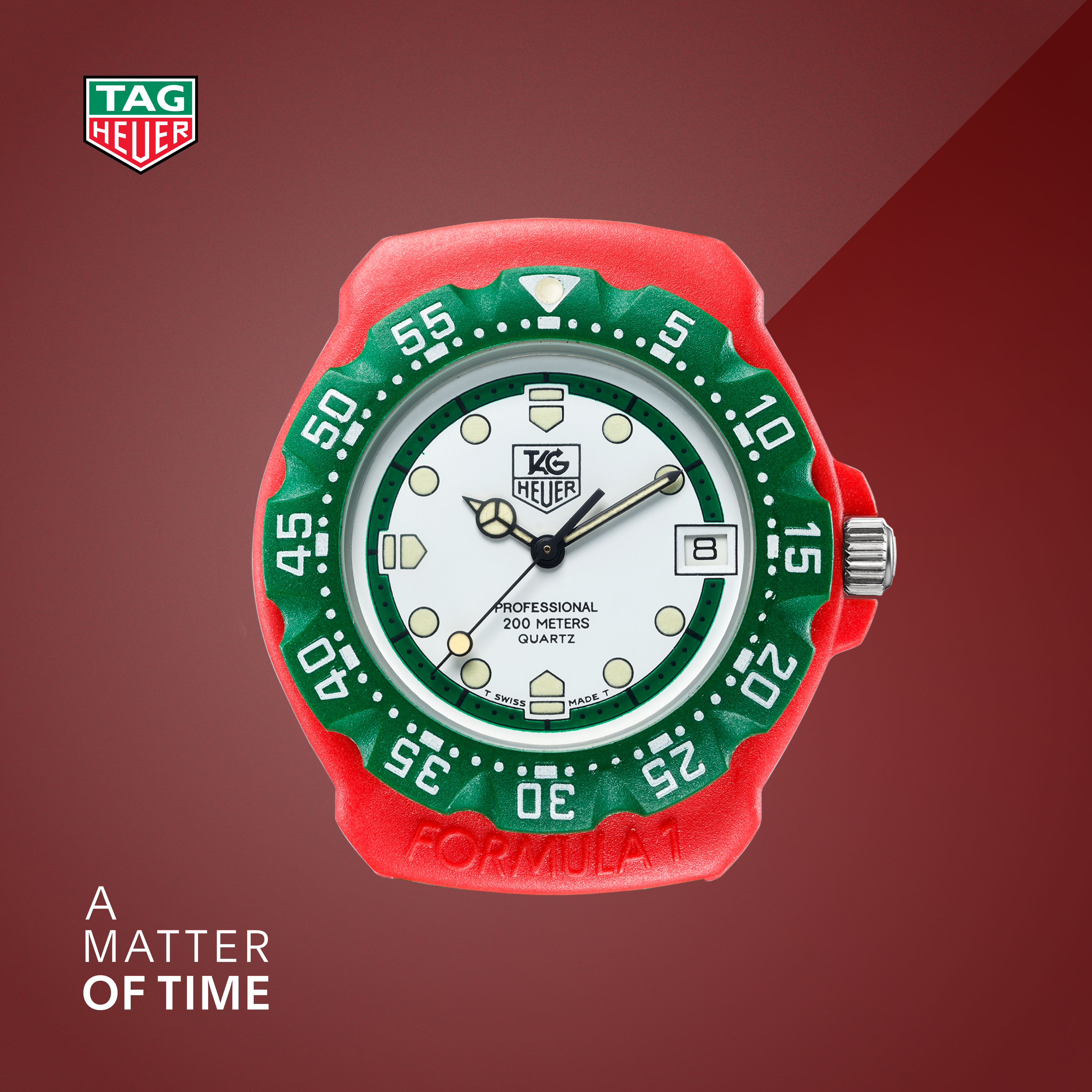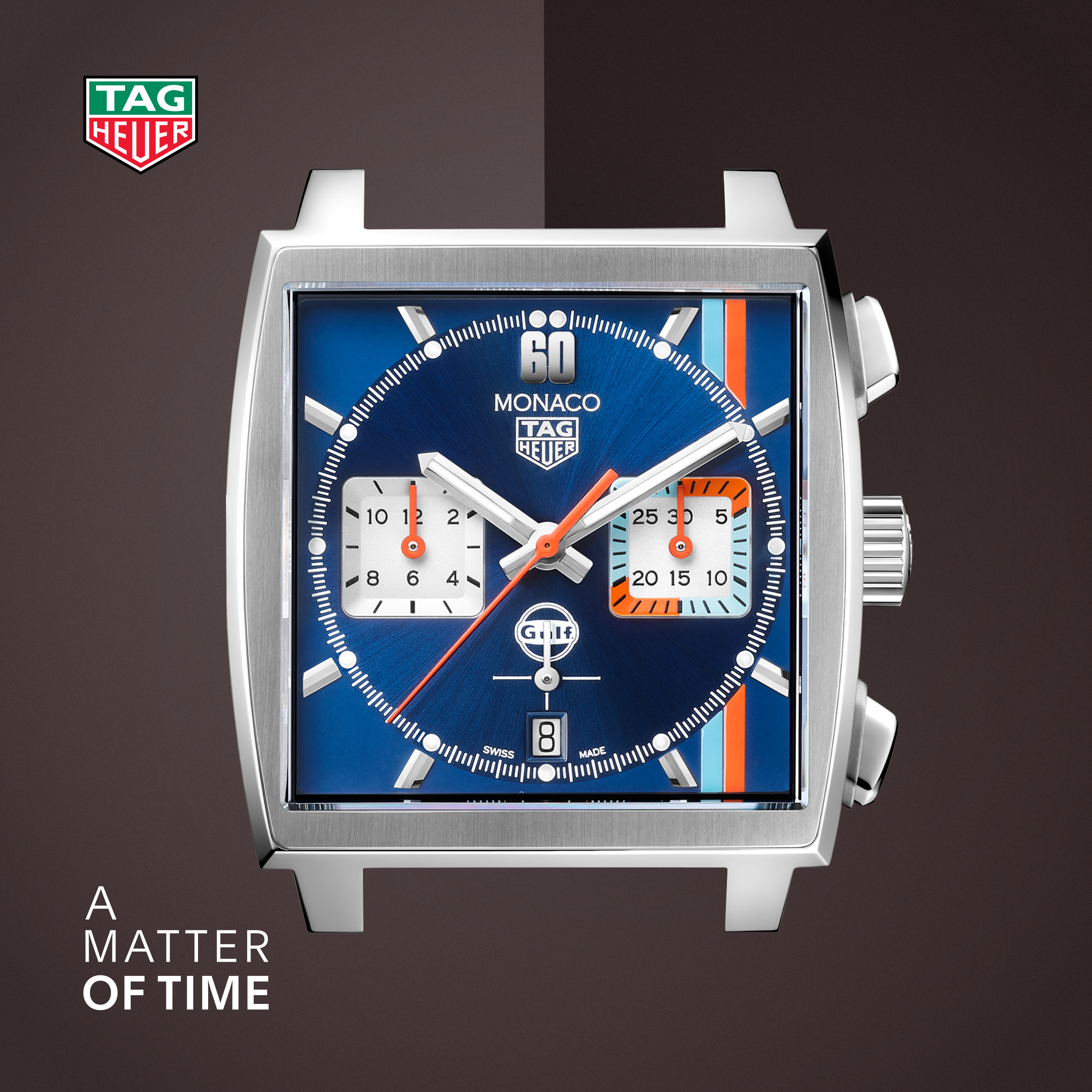Episode Transcript
Speaker 1 00:00:03 Welcome to a Matter of Time, a podcast by Tag Hoya. I'm your host, Nicholas Bebe, heritage director at Tag Hoya, and a lifelong enthusiast of fine Swiss watchmaking. In this season, we are discussing Hoya Tag Hoya and the connection to the ocean. In episode one, we discussed the So Luna, the first watch ever created with a Tide indicator, an industry first. That was a great innovation for the brand and for our partner, Abercrombie and Fitch. In this episode, we're gonna discuss the seafarer and the other chronographs that also hosted a tide indicator. We alluded to the model in episode one, but in fact there were so many different references. It's really worth exploring in its own dedicated episode.
Speaker 0 00:00:51 Following
Speaker 1 00:00:52 The launch of the So Lunar in 1949, the Seafarer would follow soon afterwards and in its first executions, the reference 3 46, it featured this amazing oversized case that was most familiar to consumers at the time for these large diameter military watches that Hoyer had also been producing
Speaker 0 00:01:10 With
Speaker 1 00:01:11 Its robust proportions, screw down case, back, oversized crown, and of course, the pusher integrated into the case to set the tide indicator. It was a beautiful watch. This reference would feature radium for the luminous material on the hands and hour markers, and as a result, many of the dials age to this warm patternation that gives it almost this pink hue over the original Grenier silver dial. The tide indicator itself is a window cutout at nine o'clock, and it's very different from other models that were produced. There's also the echoes of the Retta count down timer on the minute recorder at three o'clock so that it could also serve during sailing races. Following on from the reference 3 46, we jumped to the reference 2 4 43. This, again, features an oversized case, but with these very interesting fasted lugs that are also familiar to those who know the pre Carrera reference 2, 4 47. For me, this is one of my favorite case designs. It's amazingly sized. It's great to wear on the wrist, and when you find these cases in unpolished condition, these sharp facets add this amazing sensation to the aesthetic of the case. Again, we see a screw down case back and oversized crown, but now the tied indicator fills the dial at nine o'clock, so you can see all of this amazing color and design that was integrated into the dial. Of course, I'm busy describing these watches in an audio medium, but you can follow the episode notes to a link to an article on our website showing images of these amazing watches.
Speaker 1 00:02:48 The next iteration of the Seafarer would take the watch in a slightly different direction. The reference two triple four familiar is one of the key pre-care references that were produced in the 1950s, reduced the case sites to around 36 millimeters and gave it a much more classical Tono case design. Again, we have the water resistance aided by the screw down case back, and we have these very interesting pushes that are kind of tall and thin and a very different proportions to what we saw in the previous versions of the seafarer. The tide indicator was simplified rather than including these gradating waves, we see these clear sections divided into yellow in this kind of sky blue, and again, we see the sky blue markings to the minute recorder for the chronograph to aid as a regatta count down timer. We see a lot of variations in the hour markers for this particular reference. We see Arabic numerals. We see batten markers, and we also see this classical pointed marker on the outside track, a design code that was distinctive to the seafarer at the beginning of the 1960s. We see the launch of the TAVI in 62 and the Carin 63, and the case designed for these two iconic models would be repurposed for seafarers themselves.
Speaker 1 00:04:03 The reference 24 4 6 seafarer is among the rarest and most desirable for collectors. This incredible or Autavia case repurposed with this silver dow that we don't really see on the standard production of the ottavia continuing the rotating bezel and often seen on this beautiful gay fair bracelet, which is so iconic for Hoya as a brand. Following on from that, the reference 24 47 Carrera case Seafarer is really one of the most handsome watches and extremely comfortable to wear another highlight for me together with the Ottavia case version. It's highly coveted by collectors, and when we see beautiful examples, they really stand out above many of the pieces we see in the marketplace. The last with the seafarer name is the 24 46 Compressor case Ottavia. This will be a natural continuation for the family with this super compressor case supplied by Pire increasing the water resistance and really making it into a true watch that could be worn comfortably out on the ocean without fear of water ingress into the movement, damaging the watch. Now, alongside the Seafarer collections, we see the So Luna graph as well. This was a piece that was specifically produced for another one of our prestigious retailers in North America. Orvis a brand that continues today. It was very much a compliment to Abercrombie and fit as one as the great sporting goods retailers, but nearly Orvis, so Luna Grass are housed in the compressor case of the Ottavia reference 24 46, with the difference being that they have this amazing sole finish slate gray dial that gives this amazing animation to the watch when it catches the light
Speaker 1 00:05:41 Alongside the pieces for our specialist retailers. Hoyer, of course produce their own variations of chrono chronographs with tide indicators. These were called the Mareo Graph and name. Much more befitting for a European market, and much like the sea feral. We see it across a number of different references, the 3, 4, 6, the 2 4, 4 3, the two triple four, the 2 4, 4 7, and of course the 2, 4, 4 6 compressor case. It's amazing to see Hoya combining its incredible legacy with the chronograph complication together with this new vertical for the company in the world of sailing, and in the next episode, we're gonna show where this absolutely indelible link was finally cemented in 1967. Thank you very much for listening to this episode or a matter of time. We do hope that you've enjoyed it. Don't forget to subscribe and leave a review wherever you get your podcast. We always love to see your feedback. Looking forward to welcoming you next time.


